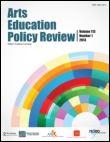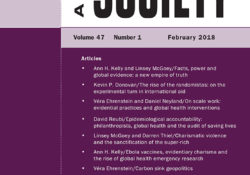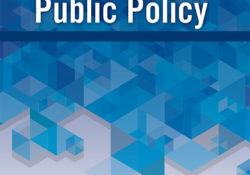tandfonline.com har udgivet en rapport under søgningen “Teacher Education Mathematics”: Abstract Formulae display:?Mathematical formulae have been encoded as MathML and are displayed in this HTML version using MathJax in order to improve their display. Uncheck the box to turn MathJax off. This feature requires Javascript. Click on a formula to zoom. Abstract It has been asserted that the test-based accountability of No Child Left Behind (NCLB) increased instruction in tested subject areas reading and math, leading to reductions in arts education. We tested this using two waves of data, before and after NCLB implementation, in a difference-in-differences design. The analyses indicated that the total teacher workforce increased substantially during this time period, while the percentage of reading and math educators remained constant, leading to an overall increase in the teacher… Continue Reading →
Like this:
Like Loading...
tandfonline.com har udgivet en rapport under søgningen “Teacher Education Mathematics”: ABSTRACT ABSTRACT The global diffusion of outcome-based accountability in education is contested, with accounts of universal convergence being challenged by perspectives emphasising heterogeneity across different national or local contexts. This study uses data from PISA to explore, firstly, the spatial and temporal diffusion of accountability across OECD countries, and secondly, whether accountability is implemented as a single coherent regime. Using cluster analysis techniques, we find that most countries fall into a ‘Thick’ accountability regime, with widespread use of most forms of accountability tools. However, this regime is not fully coherent, with some countries relying more on horizontal, and others on vertical, forms of accountability. A sizeable minority of countries fall into a ‘Thin’ regime, in which most accountability tools are… Continue Reading →
Like this:
Like Loading...
tandfonline.com har udgivet en rapport under søgningen “Teacher Education Mathematics”: ABSTRACT ABSTRACT Global trends inspired by neo-liberal tendencies have influenced developments in the Swedish school system. A flurry of educational reforms over the last decades have rapidly transformed the municipal school arena into a market in which independent, for-profit schools have expanded and school segregation has increased. This article examines municipal responses to these reforms using the theoretical framework of policy enactment. More specifically, the genesis of Maple Grove secondary school in a Swedish municipality is analysed by taking contextual factors into account. These include reform and results pressure, inspections, teacher shortages and unexpected factors such as a large influx of refugees. These factors are traced to gain insights into how municipalities weather what can be described as a perfect… Continue Reading →
Like this:
Like Loading...
tandfonline.com har udgivet en rapport under søgningen “Teacher Education Mathematics”: ABSTRACT ABSTRACT The curriculum is often the target of reform and governments use a range of accountability measures to ensure compliance. This paper examines the decisions schools in England make regarding history provision, in a period of curriculum change, and the potential consequences of these decisions. Drawing on a large, longitudinal data set, of primary and secondary material, the study examines the relationship between the number of students entered for public examination in history in England and a range of situated and material factors. The data suggest that particular measures of accountability are effective in shaping school decision-making, but the type of school, socio-economic nature of the school intake, and students’ prior attainment are also important factors in understanding the… Continue Reading →
Like this:
Like Loading...
tandfonline.com har udgivet en rapport under søgningen “Teacher Education Mathematics”: ABSTRACT ABSTRACT Over recent decades we have witnessed a growing emphasis on educational quality assurance and evaluation (QAE) around the globe. The trend, not only to intensify evaluative measurements, but also to publish school-specific indicators, has become visible also in the Nordic countries. In Sweden, Denmark and Norway, the governments have launched web-portals, in which various indicators can be observed and compared at the school level. However in Finland, the data is published only at a general level. In this article we compare the discourses of educational experts on comprehensive school QAE policies and practices in four Nordic countries, Sweden, Denmark, Norway and Finland. Our aim is to clarify how the discursive practices reflect the current evaluation and publication policies… Continue Reading →
Like this:
Like Loading...
tandfonline.com har udgivet en rapport under søgningen “Teacher Education Mathematics”: Abstract Abstract There have been concerns about the recent private turn and re-emergence of philanthropies in world health, with many worrying about philanthropies’ perceived lack of transparency and accountability. In contrast, I argue that while the private turn might have led to a decline in democratic or public accountability, it did not bring an end to all forms of accountability. Specifically, I suggest that philanthropists’ involvement in global health has led to the spread of another, new form of accountability: epidemiological accountability. The latter is a combination of two regimes of expertise and practices hitherto kept separate: audit and epidemiology. To substantiate this argument, I draw on my research on the Bloomberg Initiative – a global effort to reduce tobacco… Continue Reading →
Like this:
Like Loading...
tandfonline.com har udgivet en rapport under søgningen “Teacher Education Mathematics”: ABSTRACT ABSTRACT This paper considers teachers’ use of data from national school tests. These national tests are part of the Norwegian top-down accountability school system. According to official regulations, teachers have to use the test results to improve learning outcomes even if the test system is not able to deliver necessary data. However, previous research has shown that teachers apply teaching-to-test strategies. The focus of this paper is twofold. First, we ask, ‘How do teachers perceive and interpret the data from national tests?’ Second, ‘How do teachers view their actions related to the data from national tests?’ We base our research on data from semi-structured 5th-grade-teacher interviews. The transcribed text is subject to qualitative content analysis. We find that teachers… Continue Reading →
Like this:
Like Loading...
eric.ed.gov har udgivet: This validity study examined the validity of Assessment, Evaluation, and Programming System, 2nd Edition (AEPS®), a curriculum-based, authentic assessment for infants and young children. The primary purposes were to: a) examine whether the AEPS® is a concurrently valid tool for measuring young children’s language, literacy and pre-math skills for accountability purpose and b) explore teachers’ perceptions on using authentic assessment and standardized tests. This was accomplished through implementing both quantitative and qualitative methods. Findings from the study indicated (a) the AEPS® is a concurrently valid (b) there were both advantages and disadvantages of using authentic assessment such as the AEPS® and using standardized tests based on teachers’ perceptions, however, the practical issues of using the authentic measure can be addressed by providing in-depth trainings to teachers and… Continue Reading →
Like this:
Like Loading...
eric.ed.gov har udgivet: U.S. Federal and state education policies place considerable emphasis on assessing the effects that schools and teachers have on student test score performance. It is important for education policy makers to also consider other factors that can affect student achievement. This study finds that an exogenous school factor, discontinuous health insurance coverage, leads to a deficit in math achievement over time. A sample of Yuma County, Arizona public school students who experienced an illness or injury and whose health insurance coverage status was known were selected for inclusion into the study over five consecutive school years (1999-2003). The longitudinal math achievement trajectory of students who had private health insurance coverage was compared to students who had discontinuous coverage. Net of a student’s poverty status and other background… Continue Reading →
Like this:
Like Loading...
tandfonline.com har udgivet en rapport under søgningen “Teacher Education Mathematics”: Abstract The position statement on value-added models published by the American Statistical Association (ASA) suggested guidelines and issues to consider when using value-added models as a component of a teacher evaluation system. One suggestion offered is that value-added results should be accompanied by measures of precision. It is important, however, to go beyond simply reporting measures of precision alongside point estimates, but instead to formally include measures of precision into the value-added models and teacher classification systems. This practice will lead to improved inferences and reduced misclassification rates. Therefore, the aim of this article is to offer two suggested approaches for including measures of precision into the value-added model process. The first suggestion is to account for measurement error in… Continue Reading →
Like this:
Like Loading...







